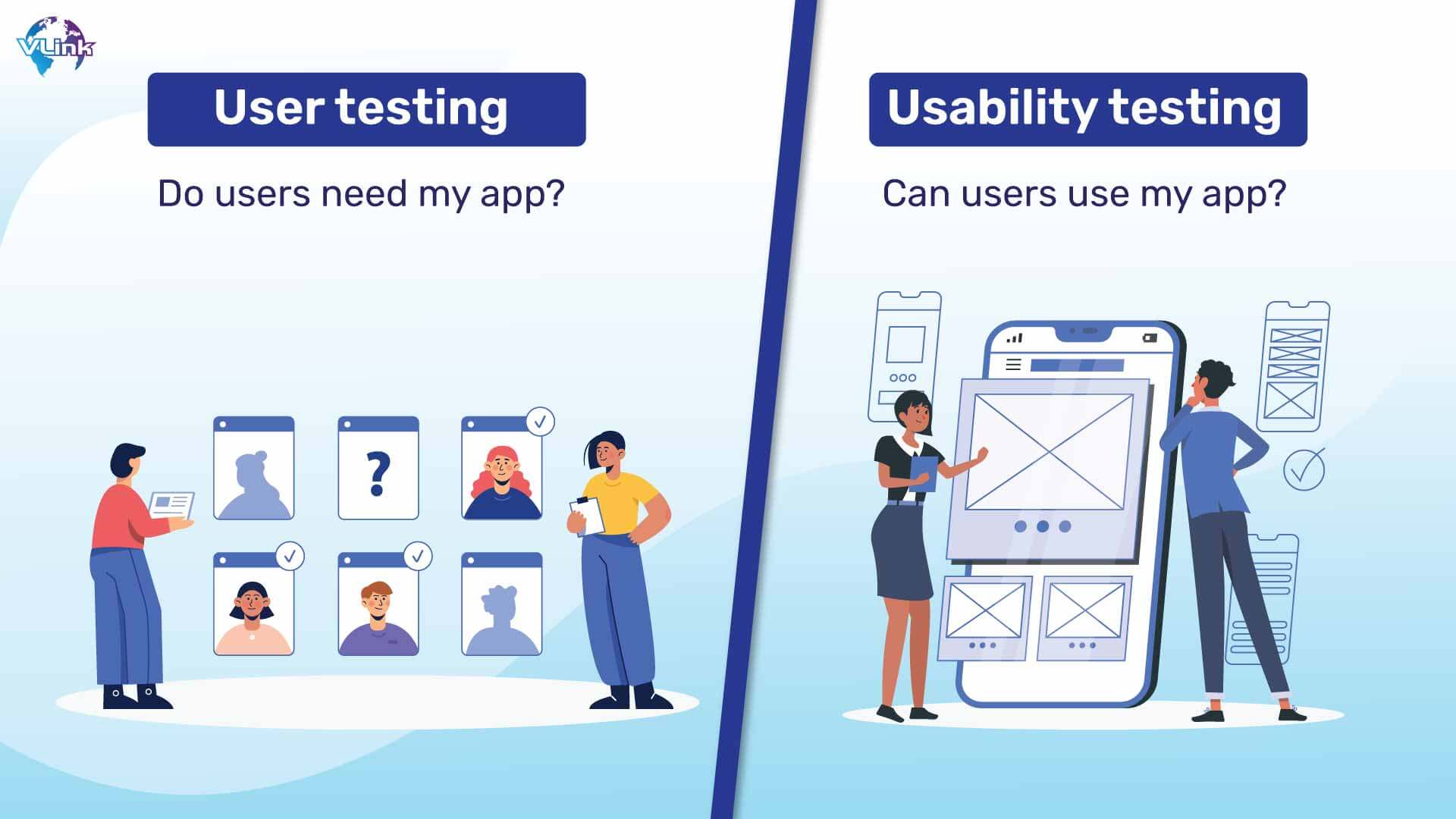Every successful business knows that recognizing its clients is essential to delivering what they want and minimizing what they find difficult or annoying.
If you incorporate user testing into the ideation, development, and optimization stages, you're more likely to satisfy—and even exceed—customer expectations for both physical products and digital experiences, such as websites and apps.
By doing this, you can ensure that every stage of product engineering and development involves creating experiences and solutions that satisfy the needs of your consumers.
You will learn about usability testing in this manual, as well as what it is, why it is necessary, how to do it, where to locate testers, and how to interpret the testing's findings.
What is usability testing?
Usability testing, which involves evaluating the effectiveness and efficiency of a product's user interface, is an important component of UI/UX design. It focuses on assessing the usability of a design by seeing how actual users interact with it, identifying any usability issues, and getting valuable feedback for improvements.
By doing usability testing, designers may ensure that their works are intuitive, user-friendly, and meet the needs and expectations of their target market. It's interesting to note that usability testing may reveal both obvious and subtle usability problems that can go unnoticed during the design process.
Watching users engage with the interface and perform particular activities in real-time allows designers to detect problem areas, places of ambiguity, and areas for development. In addition, usability testing gives designers access to subjective user feedback, providing them with knowledge about their users' expectations, preferences, and degree of satisfaction.
Difference between user testing & usability testing?
 Interacting with users is a component of both usability testing and user testing.
Interacting with users is a component of both usability testing and user testing.
- User testing
Prior to developer testing of usability, users are tested. Determine if consumers will need the good, tool, or service in the future by doing user testing. Users testing is an additional technique that marketers may use to comprehend the needs and problems of their consumers more fully.
- Usability testing
Usability tests don't have a defined duration, therefore bypassing them costs money. Marketers may carry out usability tests at each stage of the development process.
They may assess wireframes, prototypes, and even usability for each iteration of the product. Utilizing usability testing provides clarification regarding application navigational paths and efficiency assessments.
Different Phases of Usability Testing
It is best to start usability testing as soon as a mobile app is being developed. Use the following five procedures to ensure a successful usability test:
- Planning
During the planning stage, the organization decides what its website/usability testing project's objectives are and creates project documentation. The business must establish the project's road map and testing protocol at this crucial phase.
The answers to questions like what tests we should do are provided by organizations. What kind of testing methodology should we use? What circumstances should we consider when doing testing? By addressing these and similar problems, a successful approach may be developed.
- Recruiting
As the name would suggest, the organization recruits both the participants and the facilitator during this time. The number of them depends on the project's complexity and the organization's budget.
- Execution
The participants carry out usability testing in line with the guidelines given by the business. The facilitator controls the group's participation to make sure everyone abides by the guidelines.
- Data Analysis
After the facilitator hands over the findings of the usability test to the concerned team, they analyze the data and look for trends. With the facts at hand, they decide better on products and business.
- Reporting
During the reporting phase, consideration is given to the feedback that was given to the development teams after the test. At this level, there are discussions on what needs to be improved and how to actually execute those improvements.
Steps to successful user testing
Despite the temptation, it is not advisable to conduct single research to identify all problems and areas for development with your product. Risks include obtaining broad comments and wearing out your test subjects. You increase your chances of getting precise replies that can direct you toward a customized solution.
You may create a test in a variety of ways using the user testing platform. You may build one from the start, choosing your audience and test strategy. For further help, you may also choose from our ever expanding collection of pre-made templates. Also, keep an eye on the latest product design trends that can help you prepare assessments according to the latest innovations.
One option for user testing is to hold a live chat instead of an unmoderated test. Despite the fact that there are no hard and fast rules regarding which alternative is the superior one, you should aim to match your expected outcome with the kind of study that would support your objective and needs.
Unmoderated testing, for instance, can work if you need a wide group of participants and are flexible in terms of deadlines, finances, and scheduling. Although moderated tests or live chats may cost more money, they allow for more time for communication between you and the contributor, which opens up the possibility for follow-up queries.
Whether you have a website or a mobile ap or even just a prototype, you need to concentrate on enhancing only one of these at a time. As a result, you'll get the best, most practical outcomes. Three product alternatives are available for testing on the user testing platform: prototypes, websites, and mobile apps.
You might not locate the unicorn contributor you're searching for if you set up too many screeners or are too strict with your demographic specifications. Checking off every box on your list just for the sake of it won't provide the best results; you'll get more from contributors if you're clear about what you want from them but also flexible.
Generally speaking, it is best if your participants are varied. Age, gender, employment, social networks, and other factors might all be included in this. An audience may be built from scratch, or a link can be made and shared with people who are not using the platform during user testing.
Remember to think creatively and to take prejudices into account as well. A recently updated subscription app, for instance, can be the subject of your usability test.
Consider using the opinions of those who once subscribed but do not now, rather than focusing on your usual consumer. By doing this, you may learn more about why they stopped subscribing and what might entice them back.
It has been proven that a usability test with five people would find 85% of the issues with a website, and that adding more participants will have decreasing benefits. If you want to find all of your usability issues, resist the urge to "boil the ocean" by increasing or tripling the number of participants.
Including a bigger sample size is beneficial if you're seeking patterns and insights beyond the most fundamental usability concerns. In this user testing environment, five to eight individuals are advised for qualitative research, whereas over thirty participants might be enrolled for quantitative research.
Create a test plan before beginning your study if you're constructing an unmoderated test. Your test plan is a schedule of the procedures your participants will follow, the assignments they'll carry out, and the inquiries they'll respond to throughout the study.
Consider including both general and focused activities in your research, as a pro tip. When looking for specialized feedback on a particular topic, specific activities are extremely beneficial even if wide assignments tend to elicit a more diverse range of replies.
For instance, you may need your contributor to experience a fictitious checkout procedure on a website or app. You could wish to intersperse questions on usability and whether someone was able to execute activities effectively or not throughout these processes.
We advise running a dry run (also known as a pilot study) with just one or two people before launching your test to all participants. This will reveal whether your first test plan has any errors or unclear instructions.
If contributors' test results, for example, are shorter than you anticipated, you can decide to increase the number of task questions overall or add more depth to your task questions. Even though it's an extra step, taking advantage of the chance to modify and enhance the test plan before completely releasing it can save you both time and money.
The results come in, which is the moment you've been waiting for. Look for common themes and reactions as you go over the responses to your questions, as well as any significant differences.
If a sizable portion of your study's participants offer comparable input, this may indicate that there is a problem that affects your wider client base and needs to be addressed. Or you may focus on this one video to learn more about why one or more participants had such a dissimilar experience if one or a small number of individuals offer a singular piece of feedback.
Observe the things that irritate users as well as the fascinating or useful things they uncover. You may prevent the risk of "fixing" something that isn't actually broken by being aware of the aspects of your product experience that customers adore.
It might be helpful to have frank talks about how to enhance future goods and the customer experience if you know what consumers struggle with and like.
How can VLink help with UX testing?
By adhering to these guidelines, designers may produce products that are more successful and fulfilling by creating user-friendly experiences that cater to their target market's wants and expectations.
It's important to keep in mind that usability testing is a continuous activity that should be incorporated into the design lifecycle to ensure continual user experience enhancement. VLink has a team of experts who know how to blend a perfect UI and UX design into a full-fledged interactive module for the targeted users.
Just make sure you share your business goals or the existing challenges with us. We’ll implement the latest methods to get you down the road and be among the top enterprises in your industry.













